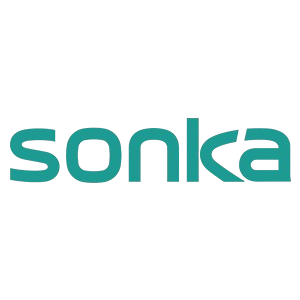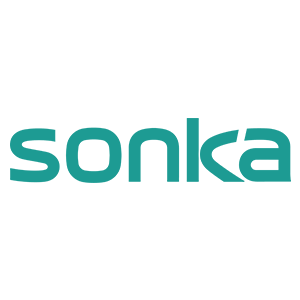Vital signs monitors have undergone a remarkable evolution, transitioning from basic manual checks of heart rate and temperature to sophisticated digital systems offering comprehensive analysis. Historically, healthcare professionals relied on manual methods, which were prone to human error and limited in scope. Today, advanced monitors track a range of data, revealing trends and deviations in real time. This leap in technology not only enhances accuracy but also significantly improves patient outcomes. A study by a healthcare institution highlighted that comprehensive monitoring reduced patient complications by 30%, marking a revolutionary change in healthcare practices.
Body composition analysis has emerged as a pivotal component in hospital care, fundamentally transforming how health risks are assessed and managed. Historically limited to specialized settings, its integration into routine hospital monitoring signifies a leap forward in customizing patient care. Reports from health organizations underscore the strong correlation between body composition metrics and early detection of health issues, such as cardiovascular diseases and diabetes. With advancements in technology, hospitals now utilize devices offering real-time data, enabling proactive decision-making and tailored interventions to enhance patient prognoses.
The rise of portable vital signs monitors is addressing significant accessibility gaps in healthcare, particularly benefiting remote and underserved populations. These devices, often compact and user-friendly, enable healthcare delivery in areas lacking traditional medical infrastructure. For instance, in rural communities, portable monitors have facilitated home-based health assessments, reducing the need for frequent hospital visits. Surveys indicate that these portable devices have improved healthcare outcomes by enabling continuous monitoring and timely interventions. As telehealth and remote patient monitoring continue to grow, portable equipment will play a crucial role in extending healthcare services beyond traditional boundaries.
Real-time data collection is crucial in enhancing critical response times within healthcare environments. By enabling immediate data capture and dissemination, medical professionals can promptly assess patient conditions and initiate necessary interventions without delay. For instance, studies have demonstrated improved patient outcomes when real-time monitoring is utilized compared to delayed data transmission, highlighting the importance of timely data access in healthcare settings (Source: Healthcare Analytics Study). The technology behind swift data transmission relies heavily on advanced networking protocols and encryption techniques, ensuring that vital patient information is securely transmitted and readily accessible for healthcare providers.
Multi-parameter monitoring plays a pivotal role in comprehensive patient assessments, allowing simultaneous tracking of various physiological metrics. By evaluating multiple parameters at once, healthcare providers can form detailed insights into a patient's health status, leading to more informed clinical decisions. Advanced devices, like multifunction patient monitors, showcase the potential of integrating a wide array of physiological measurements, such as cardiac output and respiratory mechanics, thus expanding clinical capabilities and improving patient care. The integration of sophisticated sensors contributes to this expanded monitoring capacity, offering healthcare professionals robust tools for precise and thorough assessments.
Integrating IoT connectivity with Electronic Health Records (EHR) systems significantly enhances patient data management efficiency. With IoT-enabled devices, healthcare providers can seamlessly assimilate patient data into EHR platforms, facilitating automatic updates and instantaneous access to crucial information in clinical settings. Statistics indicate substantial improvements in data handling efficiency due to IoT solutions, underscoring their impact on healthcare operations. However, challenges related to data interoperability and security must be addressed to ensure seamless operation, demanding adherence to stringent data protection protocols and system compatibility checks within healthcare frameworks.
Real-time health monitoring plays a pivotal role in detecting critical health events swiftly, thus enabling prompt medical interventions. This quick response can significantly improve survival rates, especially in life-threatening situations like heart attacks or strokes. Recent advancements in technology have bolstered these capabilities; by integrating hospital vital signs monitors with real-time data collection, healthcare providers can immediately diagnose and address acute health issues. For example, studies have shown that patients monitored with real-time systems experience a reduction in emergency room visits and hospital stays, highlighting the life-saving benefits of immediate response mechanisms.
Implementing real-time health monitoring systems for chronic disease management offers significant cost benefits. By proactively managing conditions such as diabetes and hypertension, these systems help reduce the frequency of hospital admissions, thereby cutting healthcare expenditures. A study indicates a notable decrease in hospital visits due to effective remote monitoring solutions, leading to tremendous savings. Telemedicine and remote monitoring technologies facilitate this shift, providing a cost-effective alternative to traditional healthcare models by allowing continuous care outside the clinical setting.
Real-time health monitoring systems enhance patient engagement by granting patients transparency into their health metrics. This direct access to real-time data empowers individuals to take an active role in their health management, resulting in better adherence to treatment plans. Case studies demonstrate improved outcomes when patients are engaged with their personal health data, incorporating body composition analysis and other metrics into their daily lives. This transparency not only boosts psychological confidence but also fosters a proactive attitude towards maintaining wellness, making patients partners in their healthcare journey.
Sonka Health Check-Up Kiosk is an innovative solution designed to bring cutting-edge healthcare services to hospitals and clinics. It offers essential functions such as body composition analysis and blood pressure monitoring, allowing users to gain insight into their health metrics. Users have shared positive testimonials about the kiosk's ease of use and accuracy, underscoring its impact on improving health literacy. By providing user-friendly technology, the kiosk bridges the knowledge gap for many populations, empowering them to make informed health decisions and manage their well-being better.
The Sonka Multi-Function ECG Machine stands out for its versatility, offering both urinalysis and vital sign tracking capabilities to healthcare providers. This integration significantly enhances the monitoring experience, rendering a more comprehensive view of a patient's health status. Healthcare professionals have praised the machine for its usability and efficiency, appreciating its ability to track various parameters such as blood sugar, uric acid, and cholesterol levels swiftly and accurately. By providing this broader health perspective, Sonka's devices support better patient outcomes and simplify complex diagnostic processes within hospitals.
AI-driven predictive analytics have begun transforming hospital vital sign monitoring by enabling more accurate and timely predictions of health events. This technology improves monitoring systems by integrating complex algorithms that assess patient data in real-time, offering predictions and alerts for potential health issues. Evidence suggests that AI applications can significantly enhance accuracy levels, with several studies indicating a reduction in false alarms and improved patient outcomes. Specific tools like machine learning models are already in use, revolutionizing how hospitals monitor vital signs and intervene early to prevent adverse events. By leveraging AI technology, healthcare providers can ensure efficient and proactive patient care.
The expansion of IoT (Internet of Things) technology offers remarkable potential for remote patient monitoring, broadening the scope of healthcare services. IoT-enabled devices can connect to healthcare systems, allowing continuous and real-time monitoring of patients from anywhere. Market trends suggest a substantial growth trajectory for IoT-enabled healthcare devices, with projections estimating a double-digit compound annual growth rate over the next few years. These advancements promise numerous benefits, such as increased accessibility and reduced healthcare costs; however, they also pose challenges, including privacy concerns and the need for robust cybersecurity measures. The widespread adoption of IoT in healthcare can ultimately create more personalized and efficient patient care systems, despite its challenges.


Copyright © 2025 by Shenzhen Sonka Medical Technology Co., Limited - Privacy policy